Bailout CCR
When diving deep with rebreathers, it is good practice to carry bailout cylinders. Dives to 60 or 80 metres even then become critical in terms of gas management because when the maximum bottom time is reached, the amounts of gas will increase significantly. Especially in the case of urgency where breathing frequency will rise sharply, bailout cylinders quickly contain too little gas. It is therefore not surprising that divers consider a second rebreather a so-called Bailout rebreather. Or this page you will see some of these configurations. Further down the page series will also focus on the Twinspiration, a double rebreather by using two Inspiration rebreathers. Today in 2023, many different systems are offered on the market that have outgrown self-building. At Boat 2023, several sidemount rebreathers were on display that now also have CE certification.
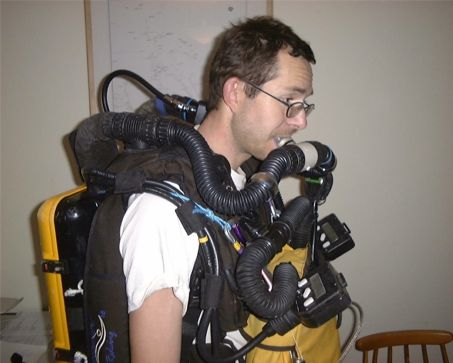
One of the first designs I saw using a rebuilt oxygen rebreather was made by John Volanthen. He used the Italian Castaro C96 oxygen rebreather. The working principle is based on a Kiss valve. Automatic diluent addition is applied.
Manual addition is possible too. Inspiration dump valve is added.
Swagelock tap to isolate the oxygen addition in bailout mode (when not in use), Oxygauge
2 P-Ports one for ADV or the secondary pO2 (VR3), the other for the Oxygauge.
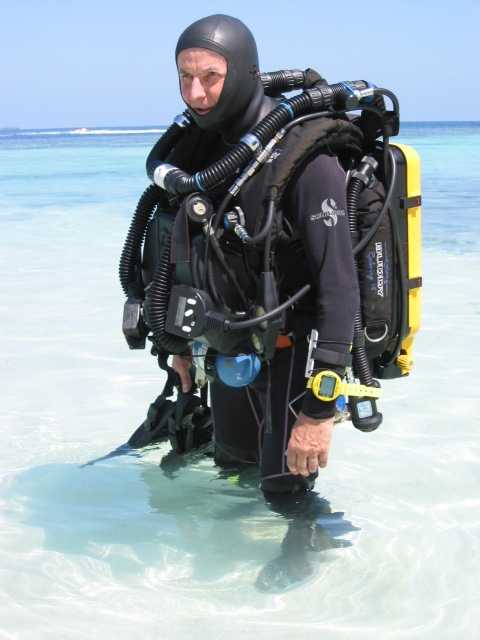
Another solution is built by Ing. Helmut Meyer. He converted a Dräger LAR VII to be used as a bailout rebreather when diving the Inspiration. The unit is built extremely nice and is operated as a MCCR.
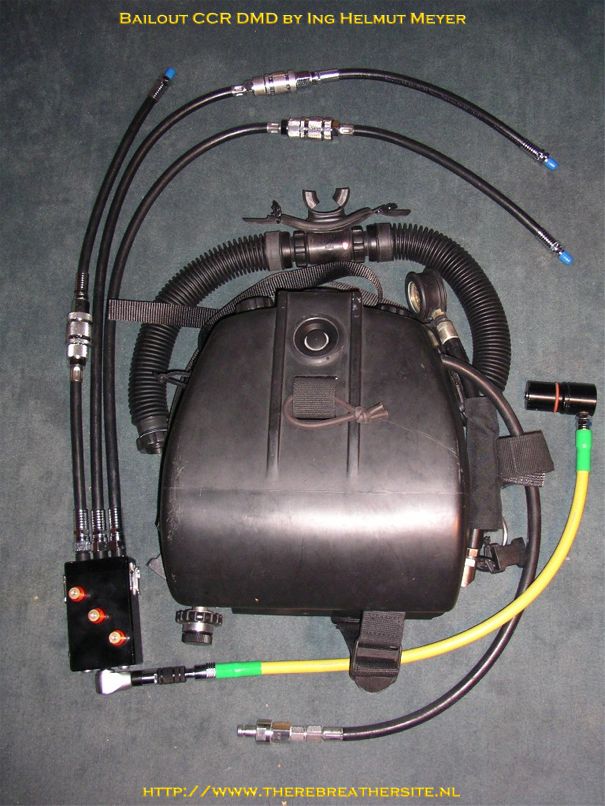
Here we see the LAR VII modified with DMD – dynamic mix device = pneumatic to produce any air/tmx/O2 – mix during the dive. The gas is added to the loop by means of a P-port.


Here you see the DMD box attached to the inboard gas supply.
For deep trimix dives the DMD box is attached to three separate tanks, which are mounted outside of the Inspiration.
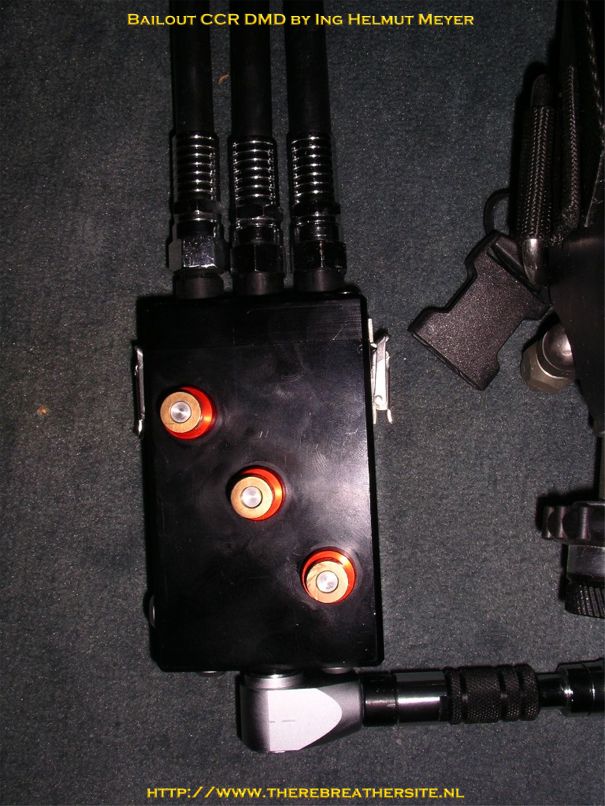

The gas supply is switched off by the APD flow stop, as long as the DMD is not used. This prevents accidental push of DMD buttons and unknown gas mix in the bailout CCR
Since the use of a bailout rebreather built in this way is new to me, I asked Helmut a few questions about the use of the unit:
Hallo Janwillem,
Answers to your questions:A. … how a rebreather switch is performed at say 80 meters:
Same way as you would do at 10m. To switch from Inspiration to LARa) LAR mounted VR3 External ppO2 switch ON and read ppO2 valueb) prepare LAR mouthpiece ready to use / change from Inspiration to LAR mouthpiece / Inspiration mouthpiece stored under the chinc) Use DMD and adjust LAR ppO2 to appropriate value i.e.1,3 bar – possibility to continue your dive for next 3 hours.
B. …does the DMD device works like a CMF device, or is it operated fully manual …
DMD operates completely manually. It is to be used for bailout – which means usually not used at all during a normal dive. No need for complex electronic configuration, but ALL gas mix used by the Inspiration with the same data to be used. Completely the same dive could be done by using the LAR bailout CCR. It is absolutely necessary to be trained on manual ppO2 control, which is already available with the Inspiration. At the beginning of the dive at say 10m or 20m – before actual decent – together with the other device the functionality of LAR / DMD need to be checked. Rebreather switch to LAR (refer to A.) / LAR Trimix diluent used / all control buttons operate. ok => switch back to Inspiration / VR3 ExtppO2 switch OFF. Deco calculation of LAR VR3 with fixed setpoint / Closed CCT mode.
C. … how do you maintain a proper pO2 during the period the LAR is not used?
During the period the LAR is not used an absolute proper ppO2 is not needed. The LAR is filled during descent with trimix diluent – that’s all. No measurement / no ppO2 control of the LAR when not used. Minimum depth has to be secured dependant upon mix; for example tx7/69 breathable from 20m+.
D. … I can imagine that at a certain moment when a problem with the Inspiration occurs you make a switch to the LAR V. I presume there is not much gas in the loop at that moment …
There is sufficient gas in the loop. You care for it during descent. During descent appropriate trimix diluent is to be added into the LAR loop / “normal” breathing bag volume, i.e. 5 liter incl. scrubber. At 80m / 0,63bar ppO2 – is enough for the first couple of breathes.
E. … What about preheating the scrubber? I hope you are able to explain this to me. …
Except test before actual descent (refer to B.) the LAR loop is not used. Resultant there is NO preheating of the LAR scrubber at all. I know DiveSorb effectiveness in 5 degrees Celsius water temperature is reduced during first 5 minutes of use. I have no data of the Co2 level in such circumstances.
F. … I think the principle is very nice since the bulky side bottles are a down point to the configuration. … Also I presume there is a secondary pO2 monitor connected to the LAR? …
Exactly – no stage tanks aside. Yes there is a VR3 connected to the LAR by P-connector. Also there is a possibility to connect a second VR3 or another ppO2 monitor. Installation of a 3-sensor set is planned for more security..
Best TRImix from TRIocean – Yours – Helmut Meyer
The third Bailout CCR is made by Steve Paige. He made a beautiful bailout rebreather. The concept is simple and effective.
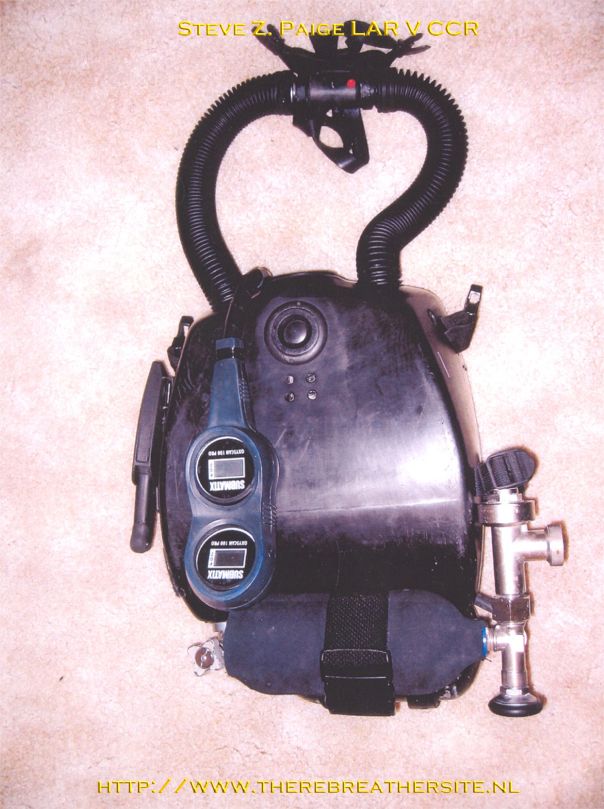
Steve managed to build a very reliable backup or main rebreather in full CC mode. The basis was the LAR V. The unit differs from Helmut’s unit because a constant mass flow valve is added. The CMF is originally from a RG/UFM and has an adjustable oxygen flow of 0.7 – 1,1 ltr/min. Another valve is used for the diluent side but only used as manual bypass valve.
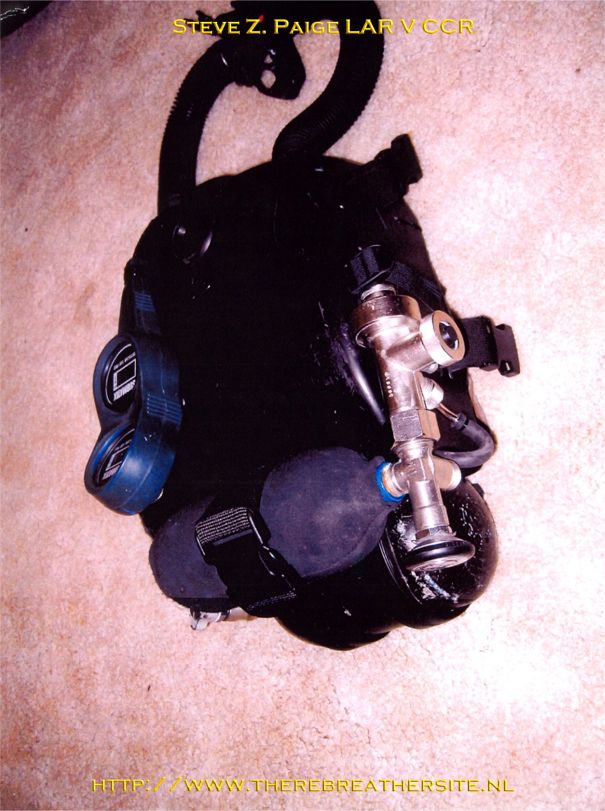
The oxygen addition valve is clearly visible. The hose runs direct into the counterlung.

Here the connection to the counterlung can be seen.
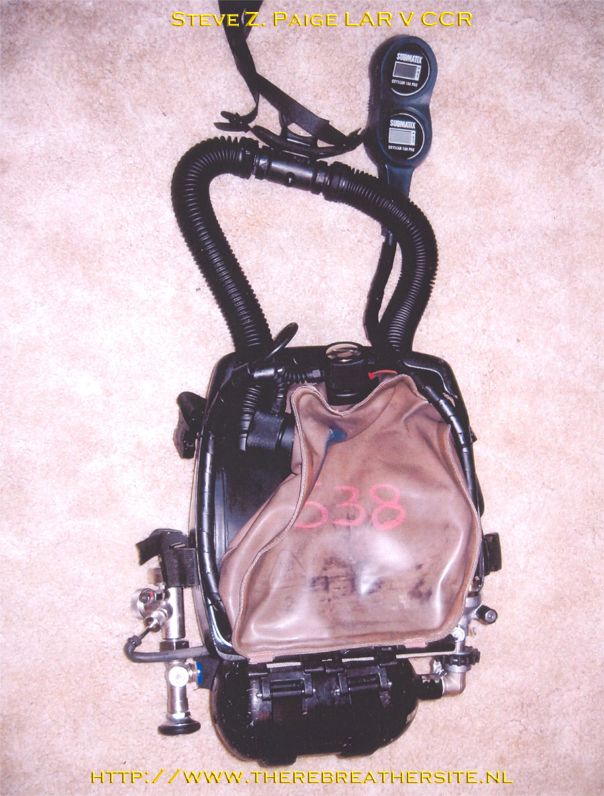
Thanks Steve for showing your converted LAR

Therebreathersite was founded by Jan Willem Bech in 1999. After a diving career of many years, he decided to start technical diving in 1999. He immediately noticed that at that time there was almost no website that contained the history of closed breathing systems. The start for the website led to a huge collection that offered about 1,300 pages of information until 2019. In 2019, a fresh start was made with the website now freely available online for everyone. Therebreathersite is a source of information for divers, researchers, technicians and students. I hope you enjoy browsing the content!
